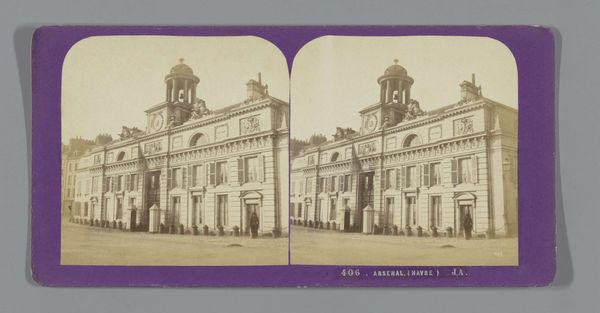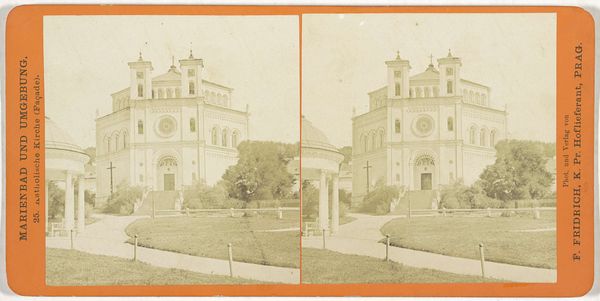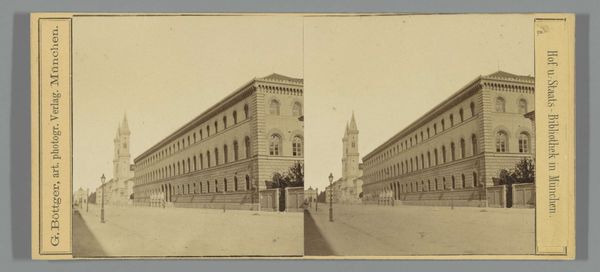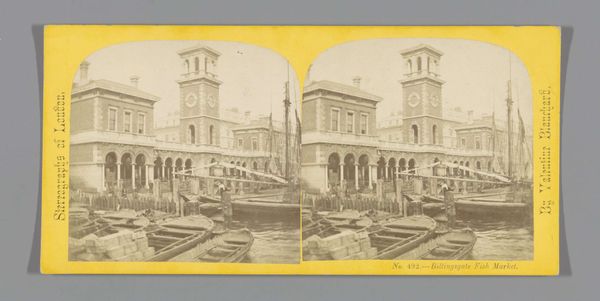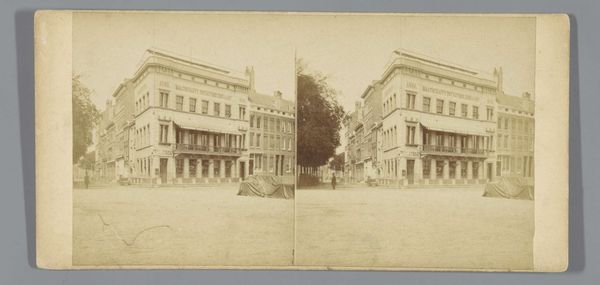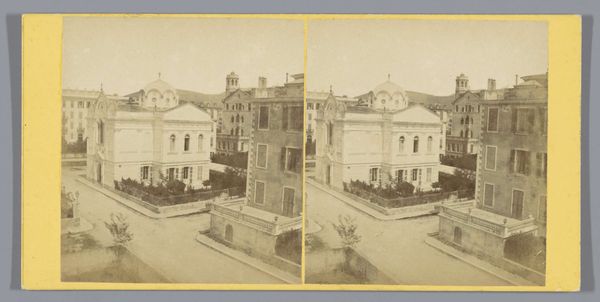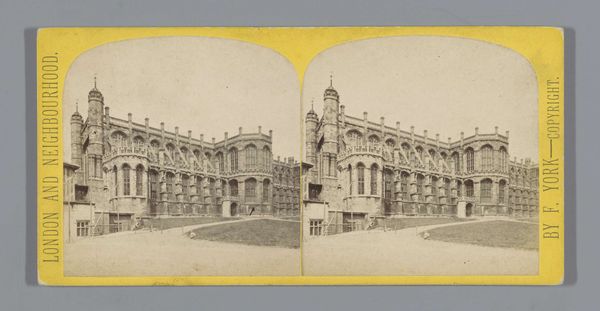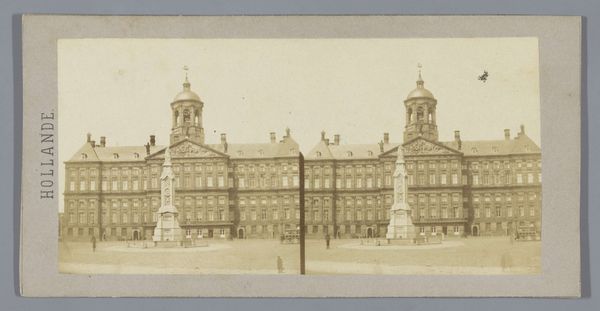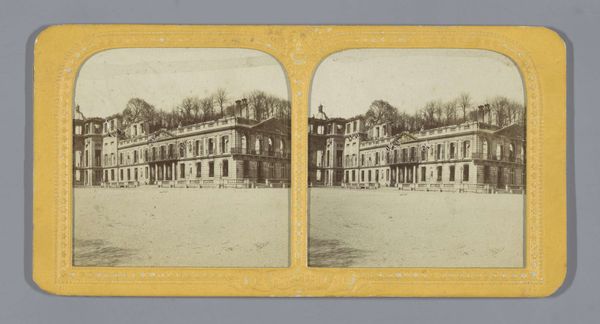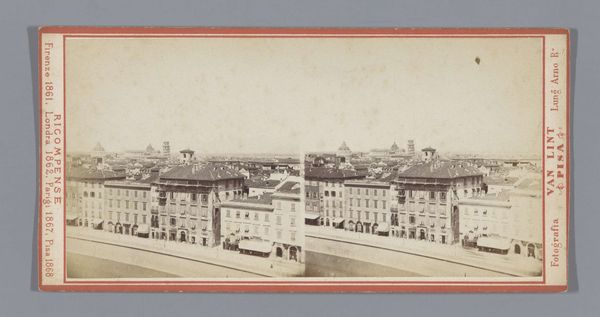
photography, watercolor, gelatin-silver-print
#
landscape
#
photography
#
watercolor
#
gelatin-silver-print
#
19th century
#
cityscape
#
watercolour illustration
#
building
Dimensions: height 85 mm, width 170 mm
Copyright: Rijks Museum: Open Domain
Curator: Welcome. Here we have a photographic cityscape dating roughly from 1850 to 1870, titled “View of the Palazzo Pretorio in Pisa,” likely the work of Giovanni Brampton Philpot. Editor: It's incredibly muted. The tonality is almost monochromatic, sepia perhaps, but very light, and that combined with the stereoscopic presentation almost flattens the grand architecture depicted. Curator: This particular print employs the gelatin silver process. Its subdued palette reflects the technical constraints of early photography. More than just documentation, cityscapes like this offered a vision of urban progress and civic identity in an era of rapid change. Editor: Note how the eye struggles with the stereoscopic effect—we expect a certain dimensionality that just isn't there, emphasizing the graphic quality. I see how Philpot balances that monumental tower and palazzo facade against the gentle curve of the bridge, creating a kind of classical symmetry within the frame. Curator: Exactly, and we should note the growing importance of travel and tourism during this period. Photography offered a portable, reproducible image for those who visited—or aspired to visit—such cities. This allowed for broader cultural exchange and the spread of architectural ideas. The Palazzo Pretorio itself, a seat of civic power, becomes accessible in a new way through such images. Editor: What strikes me is the static feel, emphasized by that precise photographic rendering of details that seem frozen in time, but also with traces of human presence in the fabrics on windows. It makes you wonder, where were they going, these nameless people on this street? Curator: It certainly invites contemplation about the transient nature of everyday life within the larger sweep of historical change. Photography's capability to freeze a specific moment, to both capture and monumentalize, is part of its early appeal. Editor: Overall, the image holds you with that contrast between stillness and implicit bustling, monumental buildings, with everyday domestic traces... very engaging and clever. Curator: It's fascinating how photography enabled people to see and engage with urban space in a completely novel way, reframing both art and the world around us. Editor: It certainly does encourage you to observe something very common as profoundly aesthetic.
Comments
No comments
Be the first to comment and join the conversation on the ultimate creative platform.
